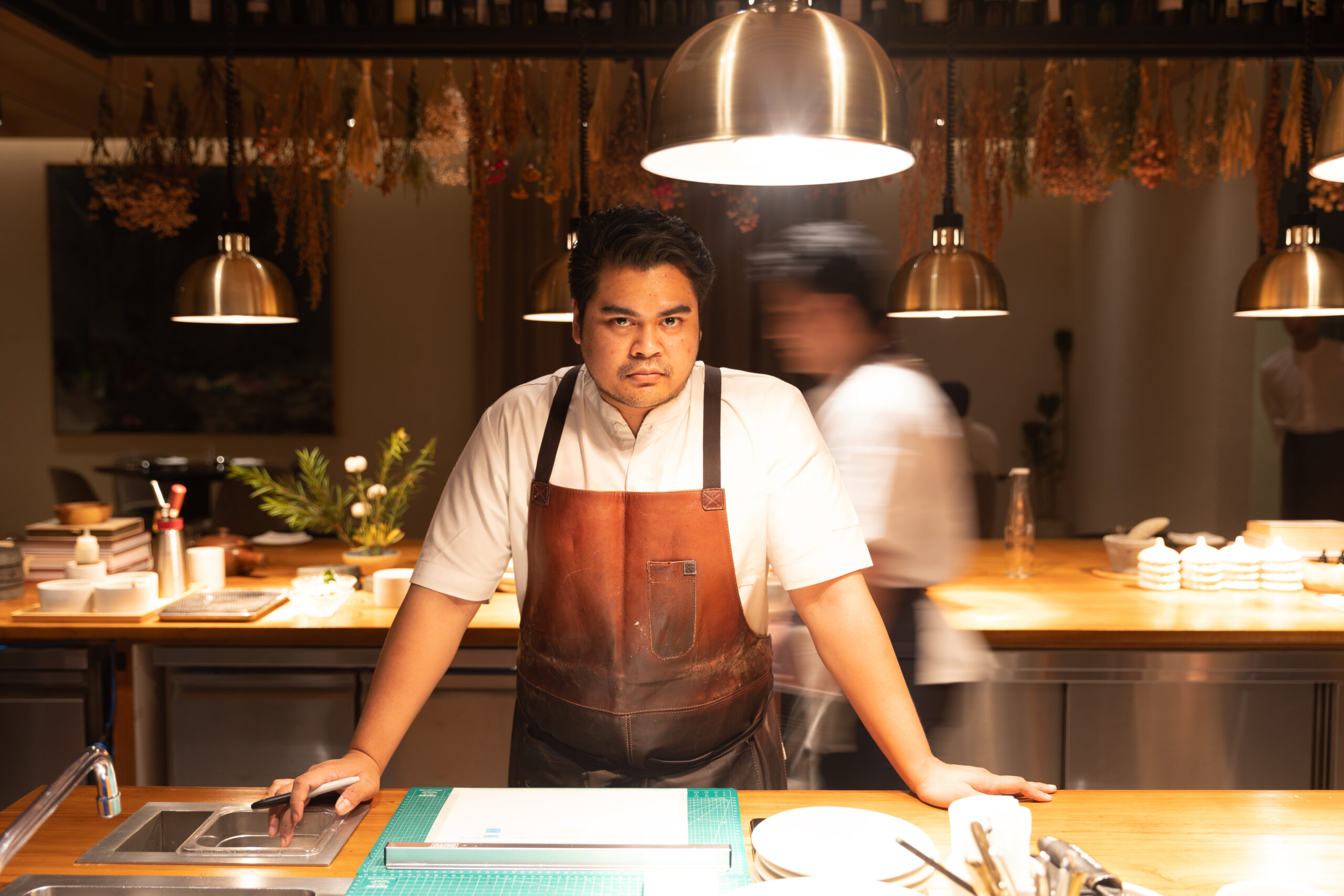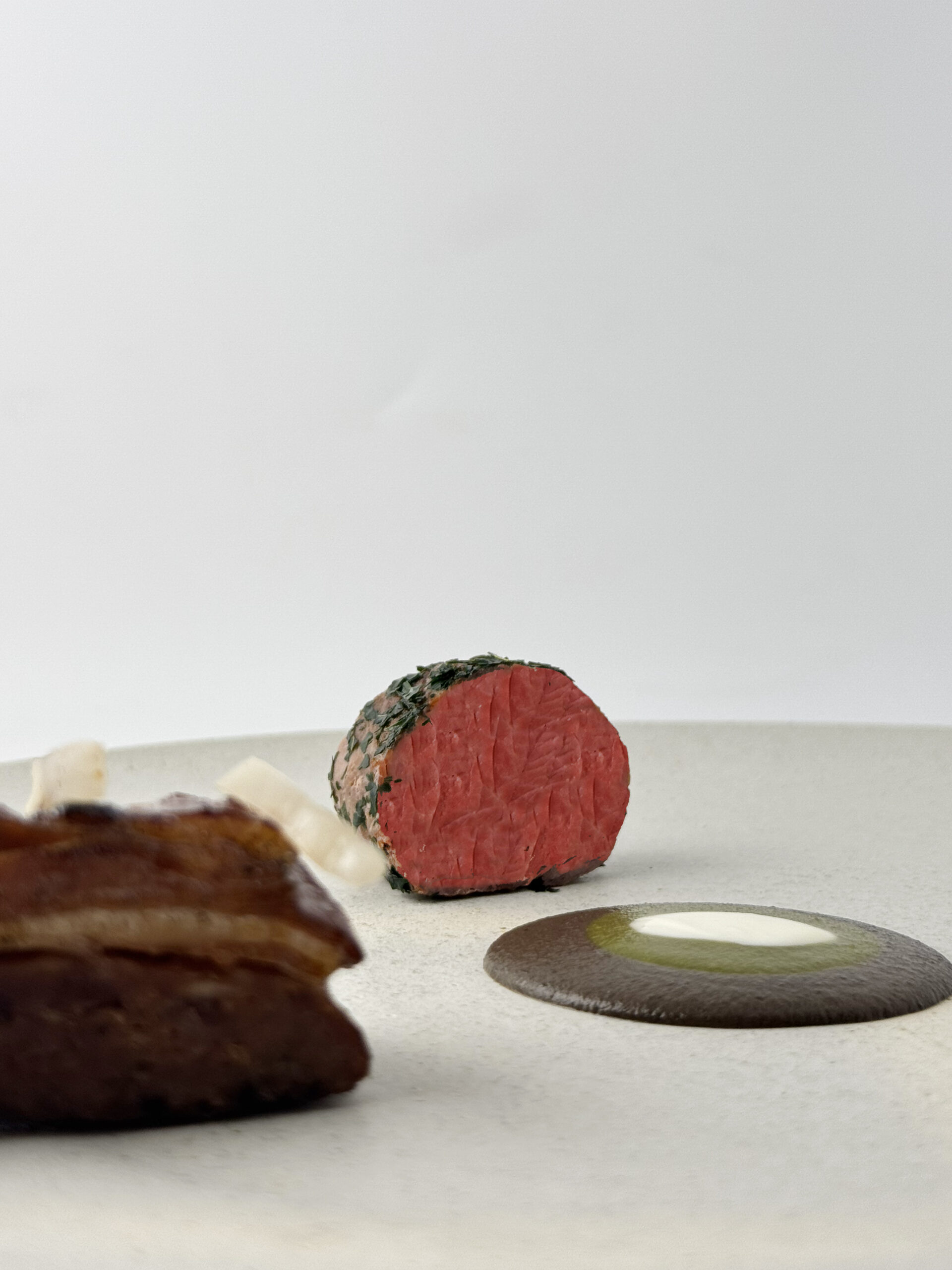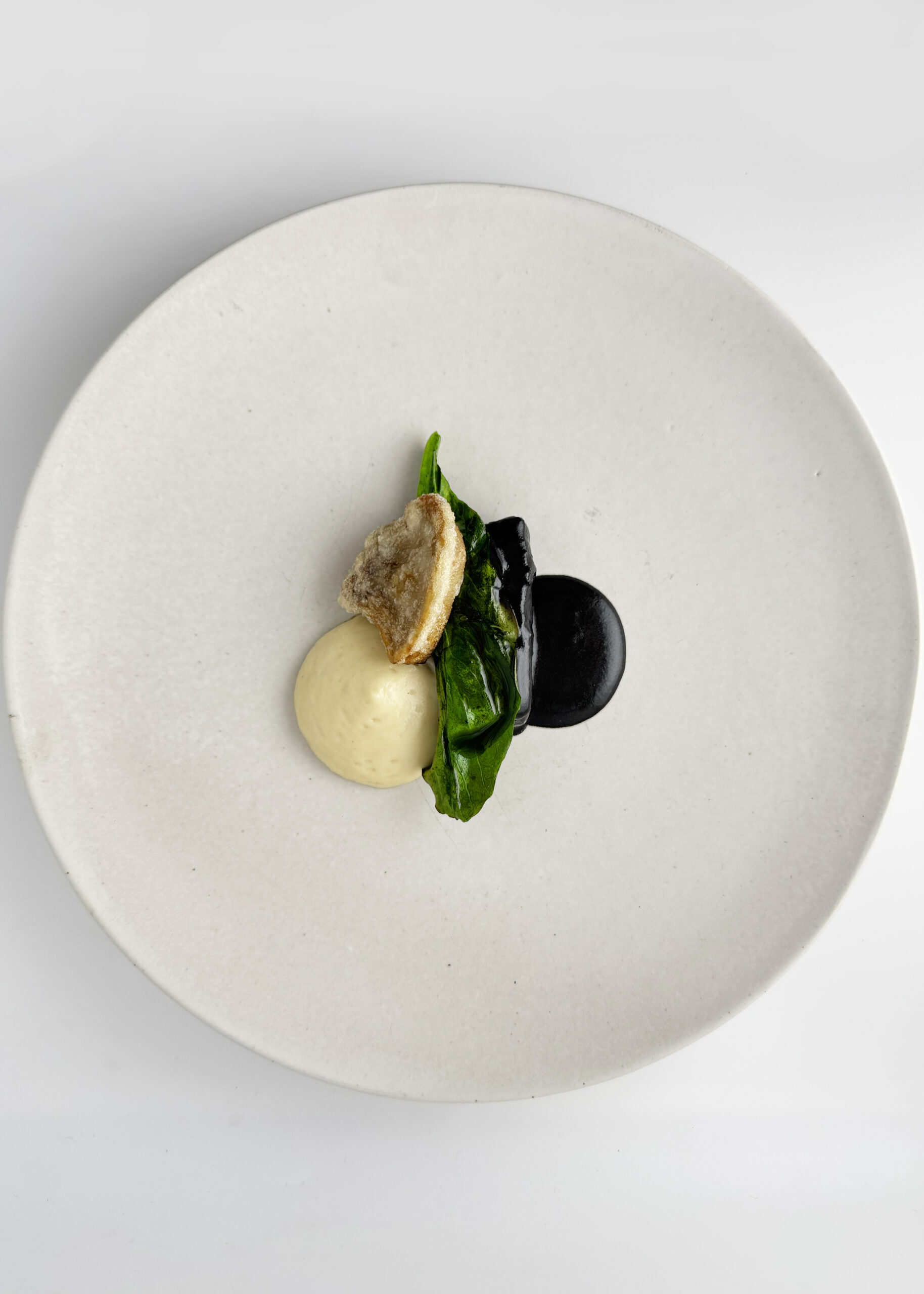Can a city be captured in a single dish? Aditya Muskita of ESA seems to have found a way.

Tucked away in Jakarta’s Sudirman Central Business District (SCBD) Park, ESA will catch your attention for a few reasons. For one, it feels more like an art gallery than an eatery, with ever-changing contemporary artworks on the walls and sketches of the new menu dangling above the seats.
Speaking of seats, the chef’s table accommodates a limited number of diners, offering a front-row view of the expansive kitchen theatre, where more than 15 cooks work in perfect harmony during each service. If the restaurant embodies Jakarta’s rich culinary culture, then the theatre mirrors the city’s hardworking spirit: dynamic, efficient, and almost always, flawless.
Three continents later
At the helm of ESA is chef Aditya Muskita, who grew up in a household that embraced a mix of Indonesian, Dutch, Chinese, and Arabic influences, and where food was always a central part. His family ran a small food business, starting with a dim sum stall before expanding into a restauran — and later a nationwide chain.
While his early interests ranged from skateboarding to medicine, it was his mother who encouraged him to pursue cooking professionally. He eventually enrolled in a culinary school in Singapore, setting the foundation for what would become an extensive career in kitchens worldwide.
His time on three continents has shaped his understanding of technique and flavour. His early years in professional kitchens involved working in award-winning establishments such as db Bistro & Oyster Bar in Marina Bay Sands and Olives in New York, where precision and discipline were paramount. He then moved to Mozaic in Ubud, an establishment that had been experimenting with modern interpretations of Indonesian ingredients. From there, he continued his journey at Room4Dessert, learning under the guidance of the generational talent, Will Goldfarb.
“The legend was true: he was tough. But it kind of shaped everyone under him into their best. I can name you a list of his proteges at R4D who ended up becoming masters all over the world,” Aditya gleefully explained, before adding, “I’m not lying when I tell you that working there was one of the most important parts of my career.”

Yet, there’s still his era in Copenhagen;. an opportunity to work under maverick Christian Puglisi was too hard to pass up. Muskita flew to Denmark to join Relæ and started to learn many new things in gastronomy, especially the powerful simplicity of Nordic cuisine. Challenges came his way and he described his experience at Relæ as ‘humbling’. He was miles away from the standard that the Michelin-star restaurant demanded, and had to work hard to finally find his groove there.
“I thought working in Daniel Bouloud and Todd English’ kitchens, then being mentored by brilliant minds like Salans and Goldfarb was enough to prepare me for whatever comes. I could not be so wrong,” says the chef jokingly.
All his experiences pushed him to rethink how Indonesian food could be presented in a way that respects tradition while introducing new techniques. After returning home to Jakarta, he was part of the team that opened the short-lived but monumental Attarine. The restaurant made heads turn for its contemporary take on the Spice Route, with Mustika bringing his Nordic influences into the restaurant’s creations. This gig puts his name on the map and the attention of food writer, Kevindra Soemantri.
ESA is the result of countless conversations between both men, where their discussions revolved around a common question—what defines Jakarta cuisine? The city is home to thousands of culinary traditions, brought by generations of migrants from across Indonesia and beyond. ESA takes that view, capturing the essence of the city through dishes that reflect its diversity. Thus, Aditya Muskita of ESA was born.

The Jakarta cuisine
Introducing a restaurant with such a specific vision was not without challenges. The term ‘Jakarta cuisine’ itself is rarely used, as discussions about Indonesian food tend to focus on regional specialities. Balancing creative ambition with the practicalities of running a restaurant was another test.
To bridge the gap between concept and execution, Jessica Eveline completed the trinity, overseeing operations and ensuring ESA’s vision remains grounded. While ESA’s approach is based on research and storytelling, it also had to appeal to diners who may not initially understand its deeper narrative.
The menu is based on memories and everyday experiences that resonate with those who grew up in Jakarta. It can come from reinterpreting traditional dishes by capturing their original sentiment, or examining how familiar street food is perceived and elevates them without losing their essence. The team works with local producers to find ingredients that are often overlooked or underappreciated, as well as explore Jakarta’s food culture by walking through traditional markets, revisiting small eateries, and understanding how people interact with food in daily life.
ESA’s third and latest season is titled Moments. It embodies everything that all three co-owners envisioned about Jakarta and its unique culinary dossier. Tasting dinner opens with three childhood snacks, each representing different specific times and locations for a child in Jakarta in the 90s.

During the second set of courses, Muskita introduces the city’s historic and cultural dishes. One of these dishes is Besan, a Betawinese wedding vegetable curry soup that he reinterpreted into seafood curry served on a seashell.
The third set brings personal memories into the design, with the delectable Steak & Rice taking centre stage. This dish not only showcases a beautiful cut of the day accompanied by two nostalgic sauces (salted egg and rawon-inspired squid ink) but is also served with hot steamed rice—a creation rooted in the core memory that many people were introduced to steak as a side dish.
This set also includes Memories of Copenhagen, a marigold sherbet dessert that evokes memories of his Danish days. This dish was born out of the realisation that the marigold flower had found it’s place in Jakarta’s environment, symbolising the city’s adaptability to incorporate non-native ingredients.
“The goal is not just about introducing new dishes, but about changing the way people see Jakarta’s food culture. I hope to encourage more conversations about what defines the capital’s cuisine, opening the door for further exploration in the years to come,” Aditya Muskita of ESA concluded.
